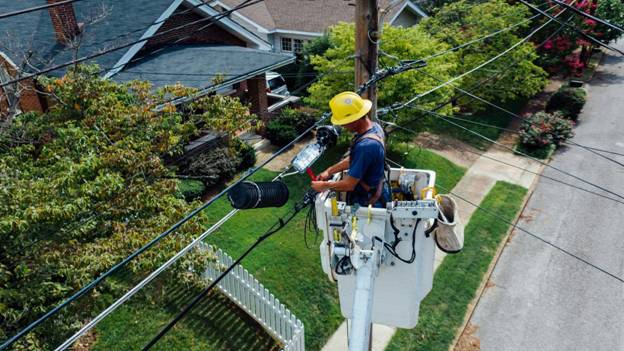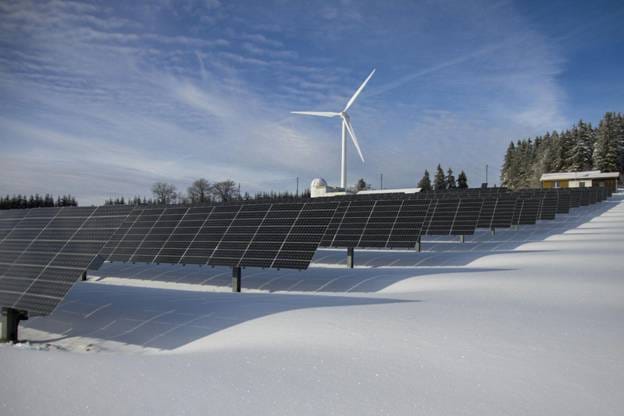
Introduction
When it comes to choosing the right electricity and gas plans for your home, understanding your local energy market is crucial. Often, consumers are unaware of how regional factors can influence the best energy plans available to them. The prices you pay, the plans you choose, and even the types of energy suppliers operating in your area are all shaped by the nuances of your local market.
In this article, we’ll explore the ways your local energy market impacts the options you have for electricity and gas plans. We’ll delve into the factors that determine energy pricing, how energy deregulation plays a role, and how you can make informed decisions to save money while ensuring a reliable supply of energy for your home.
What Is Your Local Energy Market?
Simply put, your local energy market refers to the network of energy suppliers, utilities, and regulatory structures that provide electricity and gas to your area. While the broader energy industry operates on a national or even global scale, local markets can vary significantly based on geographic location, infrastructure, and local laws.
Understanding how your local energy market functions is key to choosing the best energy plan for your needs. There are several factors that influence these markets, including whether your area is deregulated, the level of competition among energy suppliers, and the available energy sources (renewable or non-renewable).
The Role of Deregulation in Local Energy Markets
In many areas, energy deregulation has transformed how consumers can purchase electricity and gas. In a deregulated market, energy suppliers compete to offer you the best rates and plans. This means that, instead of being tied to a single utility company, you have the freedom to choose from various energy suppliers. These suppliers may offer different pricing models, such as fixed or variable rates, green energy options, and additional incentives or benefits.
However, not every area is deregulated. In regions with regulated energy markets, the local utility company is typically the sole provider of both your energy supply and distribution. In such areas, your choices may be more limited, and the price you pay is largely dictated by government-regulated tariffs.
If you live in a deregulated area, it’s important to compare different suppliers to find the best plan for your home. Prices can vary widely between suppliers, and even small differences in your plan could add up to significant savings over time
How Local Energy Pricing Works
Energy pricing is not a one-size-fits-all model, and local factors play a critical role in determining how much you pay for electricity and gas. Several elements contribute to the cost of energy in your area:
Energy Supply Costs
The price of the energy itself is typically the most significant portion of your bill. The cost of generating electricity or extracting and delivering natural gas varies depending on the energy sources used in your area. For example, regions that rely heavily on renewable energy sources like wind or solar may offer lower prices as these resources become more efficient and widespread. Conversely, areas that depend on coal, natural gas, or other fossil fuels may see higher prices as fuel costs fluctuate.
Local energy suppliers may also have different contracts or arrangements with energy producers, which can influence pricing. A supplier that has long-term contracts with renewable energy providers may offer you more stable and predictable rates.
Infrastructure and Distribution Costs
Once energy is generated, it needs to be transported through power lines or pipelines to reach your home. Local infrastructure, including the condition of the grid, the distance between power plants and homes, and maintenance costs, all contribute to the cost of electricity and gas.
In older cities or rural areas with outdated infrastructure, you might face higher distribution costs. These charges are typically set by the local utility company, which is responsible for maintaining and upgrading the distribution network. This is especially true in regulated markets where the utility company controls the supply and distribution of energy.
Regulatory and Tax Policies
Government policies at the local, state, and federal levels can also influence pricing. Local taxes, environmental policies, and incentive programs can all affect how much you pay for energy. For example, some areas offer tax credits or rebates for using renewable energy sources, which can help reduce the overall cost of your electricity and gas.
In regulated markets, these policies are often set by government bodies or energy commissions that determine rate structures and pricing models. In deregulated markets, you may still see some influence from state-level policies, but competition among suppliers often provides more flexibility in rates.
Demand and Supply Fluctuations
Just like any other market, the energy market is influenced by demand and supply fluctuations. If your area experiences extreme weather conditions—whether it’s a heatwave in the summer or a cold snap in the winter—the demand for energy will spike, driving up prices temporarily. Energy suppliers may adjust their rates based on seasonal fluctuations or unexpected events such as natural disasters that affect local power generation.
Similarly, changes in the supply of energy, such as a disruption in the availability of natural gas or a rise in the production of renewable energy, can also affect prices. Your local energy market will react to these changes, and understanding how these shifts influence your costs is vital for managing your bills.
The Importance of Shopping Around for Energy Plans
Whether you live in a deregulated or regulated market, it’s always a good idea to shop around and compare different electricity and gas plans. The best plan for you will depend on several factors, including your energy usage, the local market conditions, and your preferences.
In deregulated areas, shopping around can result in significant savings. By comparing various energy suppliers and their offerings, you can find the plan that best suits your needs. Some suppliers offer fixed-rate plans, meaning the price you pay for energy will remain the same for a set period, regardless of market fluctuations. Others offer variable-rate plans, which can change based on market conditions but may start with lower initial rates.
In addition to price, you’ll want to consider other factors such as customer service, energy sourcing (renewable vs. non-renewable), and any added benefits or perks that may come with the plan.
Even in regulated markets, comparing different plans from your utility company can help you identify any potential savings opportunities. Some utility companies offer multiple pricing structures, such as time-of-use rates, where you pay a different price depending on when you use energy. If you can shift your energy usage to off-peak hours, these plans could help you reduce your overall costs.

Local Energy Markets and Green Energy Options
As renewable energy continues to grow in popularity, many local energy markets have begun offering green energy options. These plans allow you to source your electricity from renewable sources like wind, solar, and hydroelectric power. In some cases, these green plans may come at a premium, but in many regions, the cost difference is becoming smaller as renewable energy becomes more accessible and affordable. By switching your electricity to green energy options, you can not only lower your carbon footprint but also potentially reduce costs in the long term, especially as renewable energy becomes more affordable and accessible.
Choosing a green energy plan is not only a way to reduce your carbon footprint, but it can also be an investment in the long-term sustainability of your local energy market. In areas with significant renewable energy capacity, you may find that switching to a green energy plan offers both environmental and financial benefits.
Moreover, some local governments or utility providers incentivize the use of renewable energy by offering rebates, tax credits, or other benefits. If you’re interested in making the switch to green energy, researching local incentives can help reduce the overall cost of the plan.
How to Make the Best Energy Decision for Your Home
When selecting the best electricity and gas plan for your home, understanding your local energy market is only the first step. You should also take into account your usage details, the size of your home, your lifestyle, and how much energy you typically use each month.
One of the best ways to determine which plan works best for you is to analyze your past energy bills. This will give you a sense of your average energy consumption and allow you to compare plans more effectively. Many energy suppliers also offer online tools that can help you calculate the best options based on your usage patterns.
It’s also important to consider future energy needs. If you plan on expanding your home, installing energy-efficient appliances, or even switching to electric vehicles, your energy needs may change. Choosing a flexible plan that can adapt to future changes can save you from having to switch plans later on.
Conclusion
The local energy market plays a crucial role in determining the best electricity and gas plans for your home. Understanding how local factors, such as deregulation, energy pricing, infrastructure, and government policies, influence your options is key to making an informed decision. Whether you live in a deregulated market with multiple energy suppliers or a regulated area where your choices are limited, the right plan can help you save money, reduce your carbon footprint, and ensure a reliable energy supply.
By comparing plans, considering your energy usage, and staying informed about local market trends, you can unlock the secrets of your local energy market and find the best electricity and gas plans for your home. With the right knowledge and tools at your disposal, you can make smarter decisions that lead to long-term savings and a more sustainable future.





